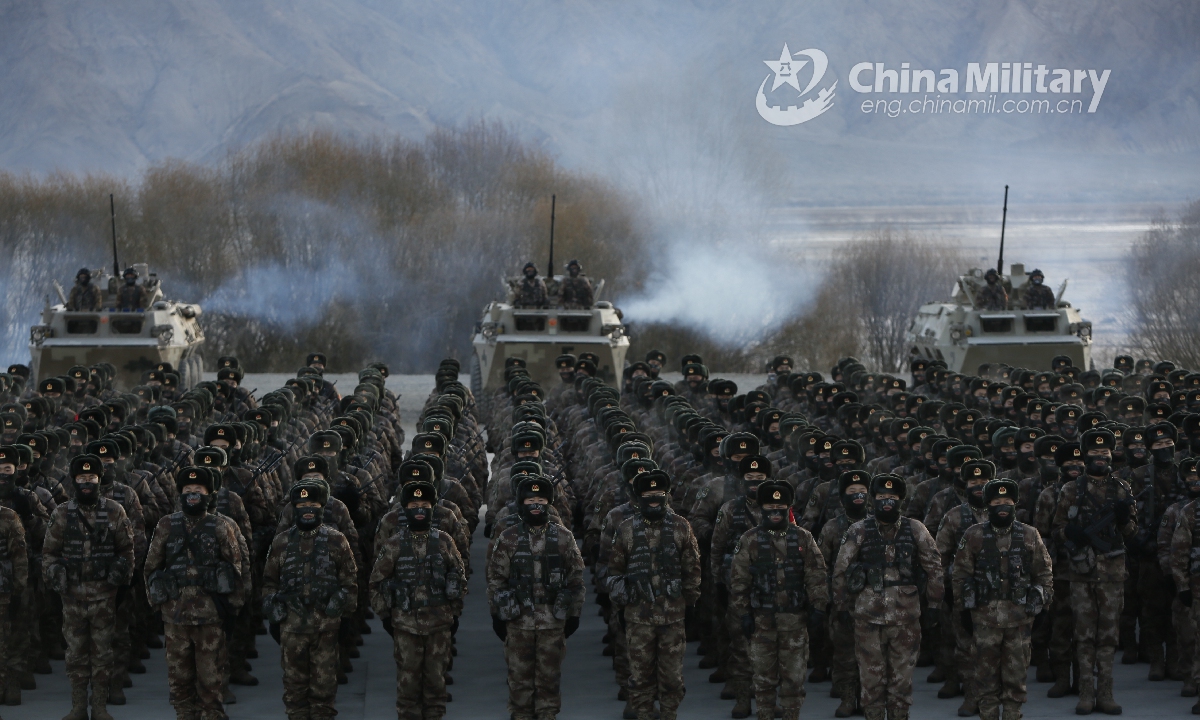
Soldiers assigned to a border defense regiment of the Kashgar Military Sub-command under the PLA Xinjiang Military Command are assembled on the training ground, well-prepared for multi-item military tests on January 4, 2021. (eng.chinamil.com.cn/Photo by Ji Wenzhi)
The Chinese People's Liberation Army (PLA) has built newly developed micro-power grid systems for more than 80 border defense outposts in remote plateau regions and islands, and troops stationed at these posts are using stable, reliable and renewable solar and wind energy sources in addition to diesel oil and battery storage, ensuring their combat capabilities, analysts said on Thursday.
Construction of an off-grid new-energy micro-power grid that integrates wind energy, solar energy, diesel oil and battery storage systems has been completed for a border defense company affiliated with PLA Xinjiang Military Command stationed in Shenxianwan in Karakorum at an elevation of 5,380 meters, the PLA Daily reported on Wednesday.
The stable, all-weather power supply has fundamentally solved problems that the troops had in cooking, keeping warm and showering, the newspaper reported.
Power grids like this have been established for more than 80 remote border defense outposts in plateau regions and islands, and the utilization of new energy means the troops no longer solely rely on diesel generators. They now have safe, highly efficient, reliable and renewable power supply, the report said.
The micro-power grids are customized to reflect the actual conditions at each outpost. For instance, those used in plateau regions are integrated with radiation-resistant and sand-resistant modules; those used in frigid zones have heat preservation and low temperature-resistant batteries, and those used at sea are designed to resist high humidity, salt haze and strong winds, according to the report.
Solar and wind energy are particularly useful in remote border regions, because plateau regions and islands often have intense sunshine and strong winds, a PLA veteran who used to conduct missions in Southwest China's high-altitude border region told the Global Times on Thursday, who requests anonymity.
Logistics support of this sort is a key factor in maintaining and boosting combat capabilities, and well-supported troops will be fully ready to fight at all times, the veteran said.
Over the past five years, the PLA has connected more than 500 border defense outposts to the national power grid, and the new micro-power grids were built for those that could not be connected, the PLA Daily noted.
The PLA has also been improving other aspects of infrastructure construction for border defense troops, including communications base stations and oxygen generators.
A supermarket was recently built on Yongshu Island, the first supermarket in the Nansha Islands in the South China Sea, a separate PLA Daily report said on Thursday.




